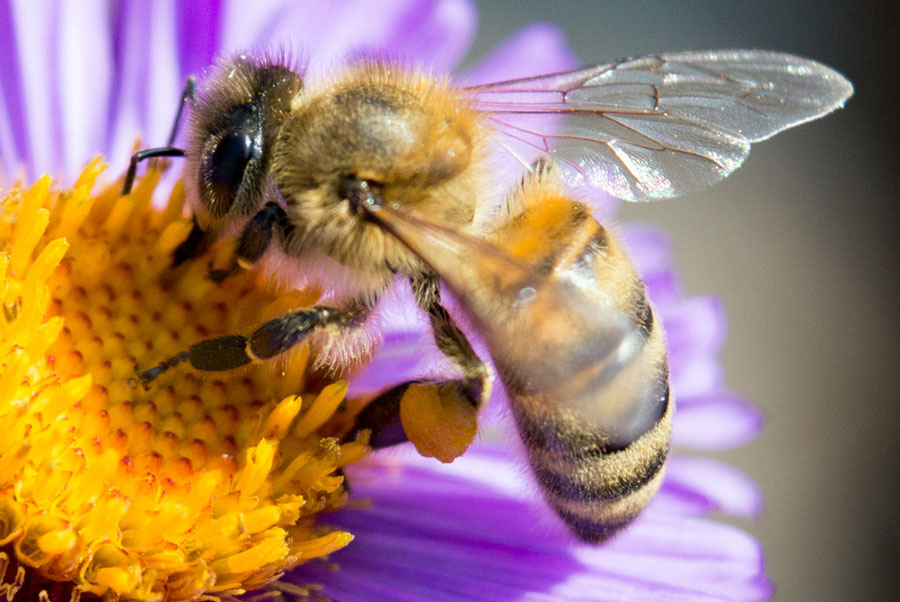
25 May Are you the bee’s knees? What does it really mean?
Last week I talked about those mighty little warriors, ants. This week I want to look to the skies for nature’s heroes the bees – or more specifically their ‘knees’.
How many times have you heard something amazing described as ‘the bee’s knees’?
It’s great to feel like you are the bee’s knees or to be told you’re the bee’s knees, but have you ever thought about what it actually means?
The history of the phrase ‘the bee’s knees’ is as unclear as the literal meaning of the expression it would seem.
What exactly is the bee’s knees meaning?
Being the bee’s knees is a great thing, but it might not have always been this way!
Among the numerous online suggestions as to the origins of this unclear yet enduringly popular phrase are:
- It originates from the Italian-American way of pronouncing ‘business’ like ‘bees-niss’
- It might be an abbreviation for the ‘be all and end all’s’ like the ‘bee’s knees’
- In the 1920’s there was a world champion Charleston dancer called Bee Jackson. So, maybe it was this bee’s knees that they were talking about?
- Simply that bees and knees rhyme
- Bees carry pollen in sacks on their knees and the phrase, therefore, must mean that the bee’s knees are full of good stuff, as in high quality pollen
Dating the bee’s knees
Not only are there many differing opinions about the origins of the phrase, but there is a bit of disagreement about when the phrase began.
Some say the phrase was coined in the 1920’s in America where they came up with lots of quirky quotes like ‘snake’s hips’ and ‘cat’s pyjama’s’ – nonsense phrases that rhymed and were to do with animals and clothing.
Some sources say it was a nonsense expression from the 1900s describing something that didn’t exist.
Apparently in the 1900s, comedic newspapers in America had articles focused on guessing who would sit together over a meal sewing buttons on ice-cream while eating the bee’s knees!
A newspaper cartoon in 1914 illustrated a character eating bees’ knees from a beehive.
Evidence suggests that the phrase started as long ago as the 1700s. Cheeky colleagues would send apprentices to buy things such as tartan paint, a left-handed hammer, or the bee’s knees. It was also referred to as being used for something as small as the bee’s knees or, alternately, as big as the bee’s knees.

The bee’s knees meaning – do they even have knees?
The real question, however, is: Do bees actually have knees? The answer is: Yes, they do! All insects have six sections to their legs. And those six sections have complicated names: the coax, the trochanter, the femur, the tibia. They also have metatarsals and tarsals just like us. Each of those six parts is connected by a joint and the one that is most like ours, and therefore most likely to be the bee’s knee, is the one between the femur and the tibia.
So, bee’s knees are not actually that special or remarkable, which is a bit disappointing. However, bees are special and remarkable.
A small insect with a big purpose
Did you know bees play the most amazing and vital role in pollenating all sorts of plants? They are incredibly important in growing crops, while pretty much all fruit and vegetables are pollenated by insects, especially by bees.
If we had no bees, the number of crops grown and harvested would be massively depleted. They say that about one third of all the food that we eat relies on bees for its production.
Without bees there wouldn’t be as many fruits and vegetables, and all the things they go to make, including jam for your toast. There would be no honey or rapeseed oil or vegetable oils for spreads.
Bees, in my humble opinion, are in fact the bee’s knees! So the next time one buzzes by you, instead of freaking out and screaming and trying to swat it, admire it instead. From a safe distance.
Respect the bee, and even say a little thank you for all the good that little stripy creature, with its little orange pollen sacks on its knees, brings to the world.
Choose the life you want to lead
Understanding and having gratitude for the world around us is important to our identity and feeling part of a community and connected to the world.
There are so many amazing, interesting topics, insects, animals and creatures to explore. Who knows what will catch the attention of Back on Track Teens next? Perhaps you have a quirky phrase that you would like help in researching, or it could just make you smile. Do share it with me, who knows it might make a future podcast or blog.
Learning is always rewarding when it’s about something that you find interesting, so make sure you find something that is the bee’s knees to you and learn all that you can.


No Comments